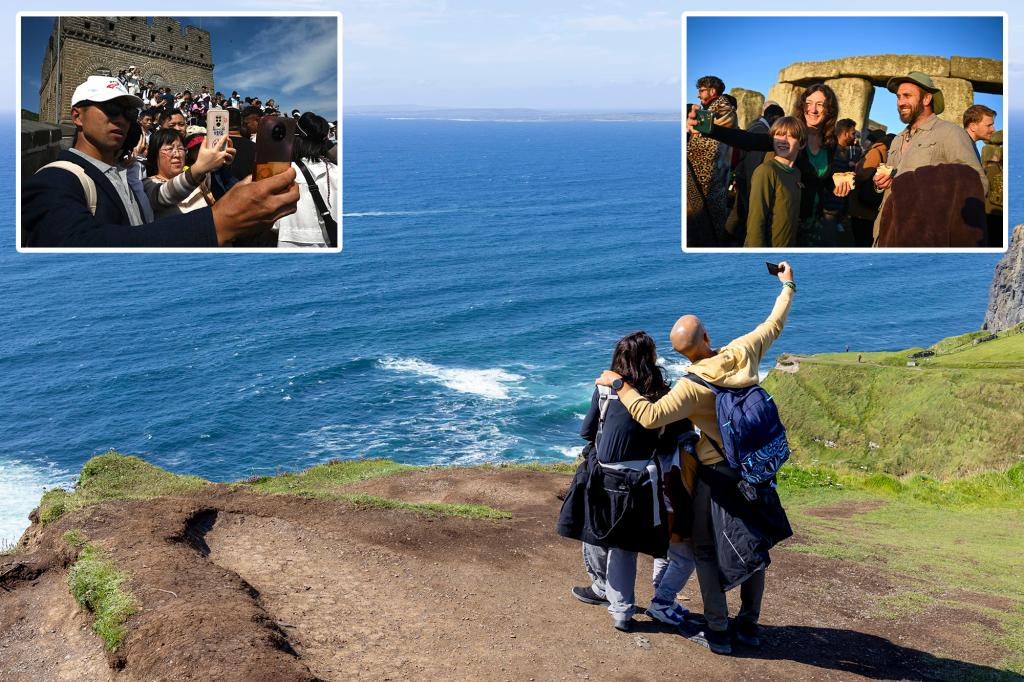UNESCO is warning about the negative impact of selfie-tourism on cultural and historical landmarks. Selfie-tourism is defined as travelers visiting destinations primarily to take and share photos of themselves with iconic landmarks in the background. This trend has gained traction with the rise of social media platforms, as visually appealing content drives user engagement. Instead of capturing memories, tourists now focus on creating shareable moments for social media fame.
The trend of selfie-tourism has led to overcrowding at specific landmarks, impacting local infrastructure, and degrading the visitor experience. Previously lesser-known destinations have been propelled into the global spotlight, resulting in an influx of visitors that can have a negative impact on the environment and communities. Additionally, the emphasis on getting the perfect photo has led to disrespectful or harmful behavior such as trespassing, vandalism, and accidents when people go to great lengths for the ideal shot.
The increased popularity of destinations on social media has led to challenges in managing the influx of tourists and implementing protective safety measures. Wear and tear on historical sites, natural landscapes, and infrastructure have accelerated due to the rise of selfie-tourism. UNESCO is concerned about the loss of significance of cultural and natural sites as people focus on getting the perfect Instagram-worthy photo rather than engaging with the history and authenticity of a place.
To address these issues, UNESCO is advocating for strategies to promote sustainable tourism and prevent over-tourism. These strategies include limiting the number of visitors, implementing timed entry tickets, or completely restricting access to certain areas. The agency also hopes to educate influencers who make these places go viral, encouraging them to set precedents for their followers by approaching sites with respect and curiosity and experiencing the unique culture and heritage of destinations.
UNESCO urges visitors to remember that their actions have an impact on the preservation of sites and the well-being of communities surrounding them. It is essential to approach these sites with respect, take the time to engage with the culture and heritage of the destination, and avoid contributing to overcrowding and degradation of landmarks. By educating tourists and influencers about the importance of responsible travel, UNESCO aims to preserve cultural and historical landmarks for future generations.
Overall, the rise of selfie-tourism presents challenges for preserving cultural and historical landmarks, with negative impacts on the environment, local communities, and the visitor experience. By promoting sustainable tourism practices, limiting visitation, and emphasizing respect for these sites, UNESCO hopes to mitigate the detrimental effects of selfie-tourism and ensure the long-term preservation of cultural and historical heritage sites around the world.


